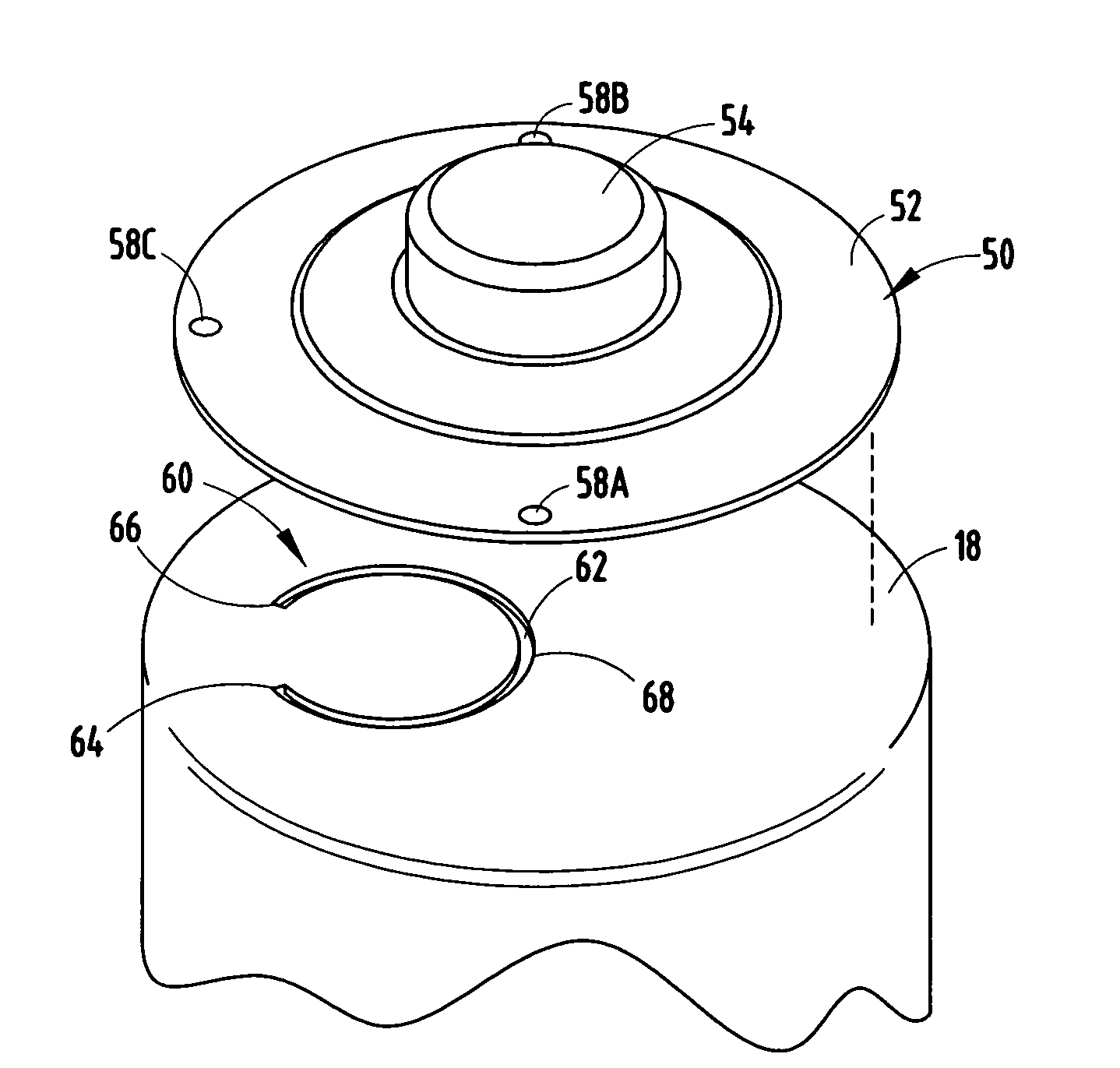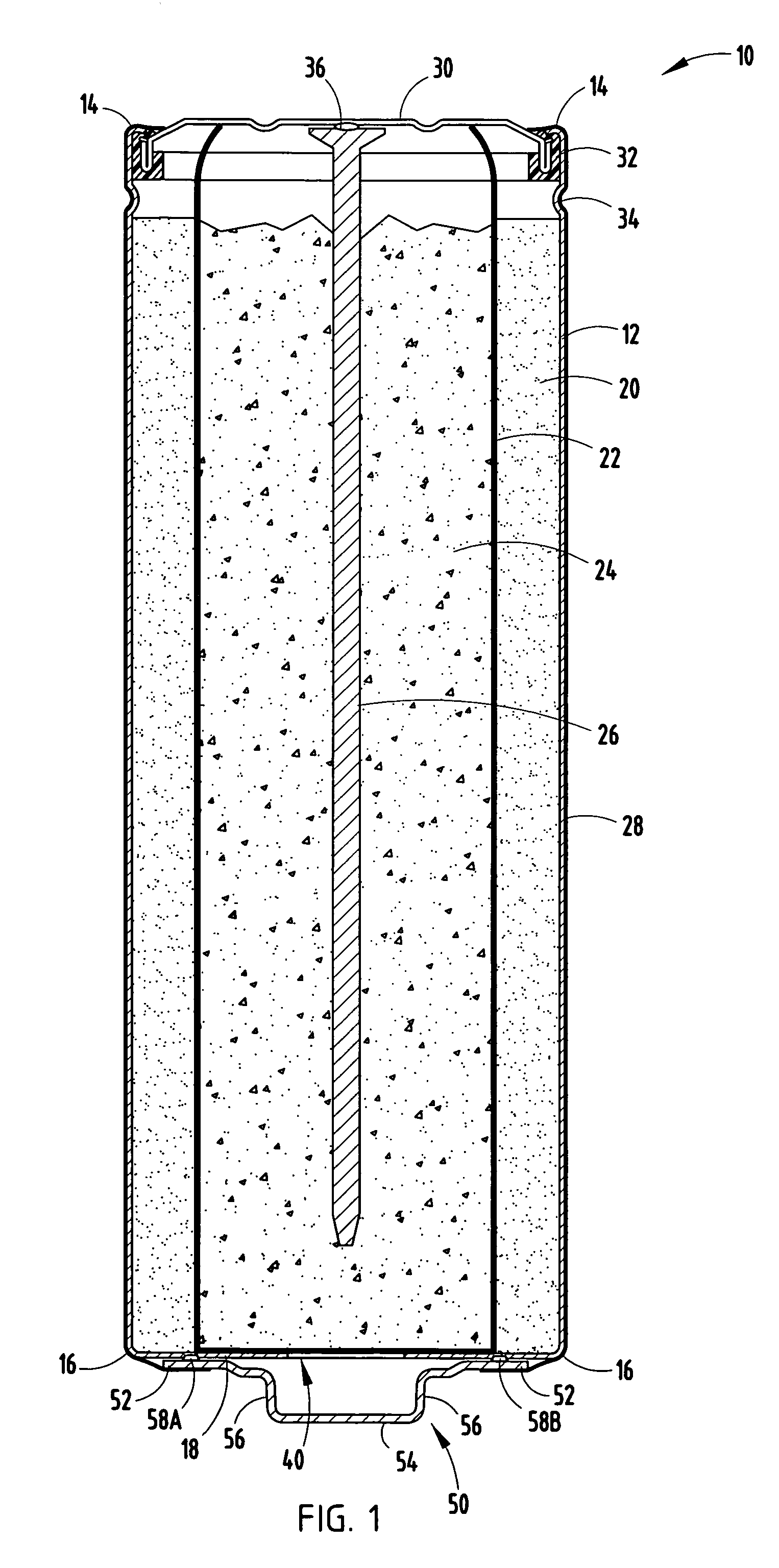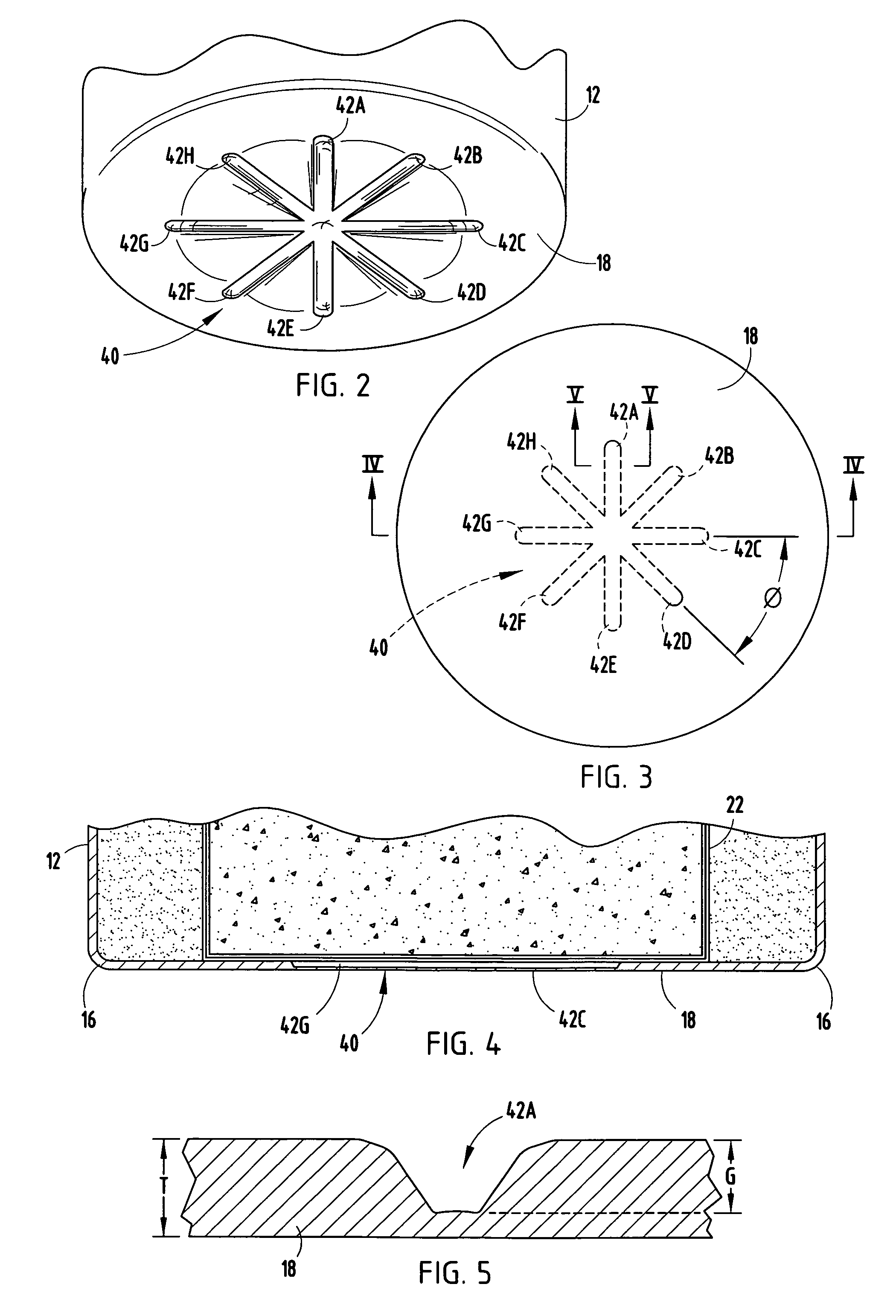Battery can having vent and asymmetric welded cover
a technology of asymmetric welding and a battery can, applied in the field of electrochemical cells, can solve the problems of consuming a significant amount of useable volume within the battery, affecting the protection of the electrochemical cell, and less space available for the electrochemically active materials, etc., to achieve enhanced venting and cover arrangement, improved protection safeguards of the electrochemical cell, and effective gas venting
- Summary
- Abstract
- Description
- Claims
- Application Information
AI Technical Summary
Benefits of technology
Problems solved by technology
Method used
Image
Examples
first embodiment
[0032]According to the present invention, the stress concentration pressure relief vent mechanism 40 is formed in the closed bottom end wall 18 of steel can 12, and the positive cover 50 is welded at select locations to the closed end wall 18 and covers the pressure relief vent mechanism 40. The vent mechanism 40 is shown in FIGS. 2 and 3 formed as a reduced thickness coined groove formed into the inside surface of the bottom end wall 18 of the steel can 12 in the general shape of a cruciform having eight radial extending reduced thickness groove segments 42A-42H. The vent mechanism 40 may have at least five radial extending reduced thickness groove segments, and according to one embodiment, has eight radial groove segments. The reduced thickness groove vent mechanism 40 acts as a pressure relief mechanism for venting pressurized gases when exposed to an excessive pressure differential. The vent mechanism 40 is designed to fracture along one or more of the reduced thickness groove ...
second embodiment
[0039] a reduced thickness groove vent mechanism 60 may be formed as a C-shaped groove 62. One embodiment of a C-shaped groove vent 60 formed in the closed bottom end 18 of can 12 is shown in FIGS. 6 and 7. The C-shaped groove vent mechanism 60 may be formed in either or both the inside or outside surface of end wall 18 and is sized to rupture at a predetermined pressure. In the exemplary embodiment shown, the vent mechanism 60 is a C-shaped groove 62 that is offset from the center, such that the terminating ends 64 and 66 of the C-shaped groove 62 are located away from the center of the end wall 18. In this embodiment, the midpoint 68 between the ends 64 and 66 of groove 62 may be substantially near the center of the bottom end wall 18 of can 12.
[0040]It should be appreciated that other shaped vent configurations may be employed in the bottom end wall 18 of can 12. It should further be appreciated that the vent, such as a cruciform, an offset C-shaped vent, or other vent mechanism,...
PUM
| Property | Measurement | Unit |
|---|---|---|
| angle | aaaaa | aaaaa |
| angle | aaaaa | aaaaa |
| angle | aaaaa | aaaaa |
Abstract
Description
Claims
Application Information
 Login to View More
Login to View More - R&D
- Intellectual Property
- Life Sciences
- Materials
- Tech Scout
- Unparalleled Data Quality
- Higher Quality Content
- 60% Fewer Hallucinations
Browse by: Latest US Patents, China's latest patents, Technical Efficacy Thesaurus, Application Domain, Technology Topic, Popular Technical Reports.
© 2025 PatSnap. All rights reserved.Legal|Privacy policy|Modern Slavery Act Transparency Statement|Sitemap|About US| Contact US: help@patsnap.com



